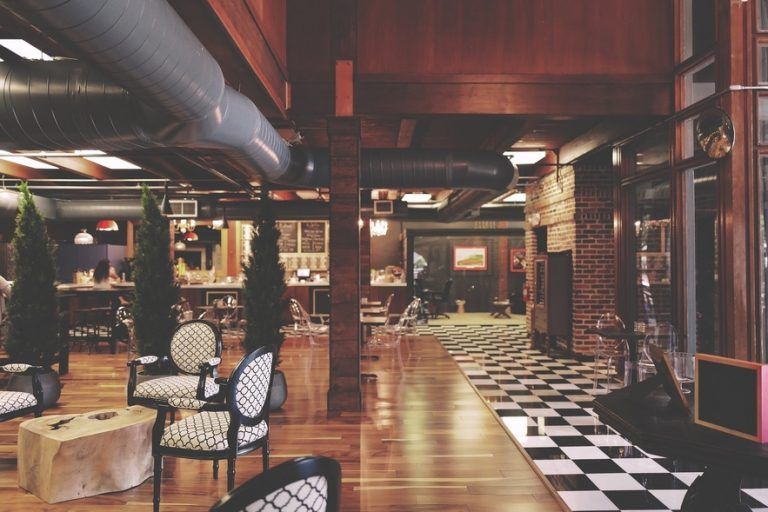PMR: 5 top trends in home & garden retail in 2020

Wpis dostępny jest także w języku:
![]() polski
polski
What trends shaped home & garden retail in Poland in 2020? A pandemic-induced surge in online shopping was the most prominent one. But there were others that helped to define the year. We have picked five trends that we think were most important in 2020.
New home completions stay resilient
How many new homes get built is vitally important both for the DIY market and for the home furnishings market. And new home completions in Poland held up strong in 2020, despite the shock of the pandemic. According to GUS data, in the first 10 months of the year nearly 176,500 new dwellings were completed, an increase of 6.1% compared with the same period in 2019. In all of 2020, we expect new home completions to be similar to 2019, well surpassing 200,000 units. That’s a very high level by historical standards.
The pandemic’s negative impact on housing construction will become more evident in 2021, as declines in building-permit issuance and housing starts observed in 2020 inevitably translate into fewer completions. In January-October 2020, housing starts fell by 7.7%, year on year, to just under 187,000 units, and building permits by 4.5%, to 219,000. These decreases reflect uncertainty in the market amid a deterioration in household finances and consumers switching from spending to saving mode. Paradoxically, the central bank’s move to cut interest rates, rather than stimulating investment, contributed to the slowdown, too. That’s because banks, faced with unprecedented uncertainty, responded to lower rates by tightening their lending criteria. As a result, in the second quarter of 2020 the aggregate value of newly approved home loans in Poland slumped by nearly a fifth compared a year earlier.
Even so, we forecast that new home completions will remain high in 2021, at nearly 200,000 units, a better result than in 2018, for example. We expect that building permits and housing starts will decrease again, but not by as much as might have been feared even a few months ago.
Pandemic makeovers and rearrangements
By keeping people at home for unprecedented amounts of time, the coronavirus pandemic fuelled a rise in home renovations and improvements in 2020. The shift to home working, and the closure of schools, also drove up sales of specific categories of furniture, as Poles had to set up spaces in their homes for working and learning remotely.
In a survey for VOX in April, more than 40% of respondents said they had moved to working from home in the pandemic. Of this group, just 39% said they had already had an appropriate space in their home in which to work when Covid struck.
In a PMR survey in September, a fifth of respondents who purchase children’s products reported having bought things specifically to help their kids learn from home in the pandemic, and furniture was the second most mentioned category, only behind electronics. 26% bought chairs, 23% desks and 14% bookshelves.
E-commerce soars
As with other retail segments, online sales of home and garden products exploded in 2020. Both furniture chains and DIY chains recorded major increases in e-commerce, even though the latter were substantially less affected by lockdown orders than the former (see below). The trend extended to online platforms and marketplaces.
Castorama said online sales jumped by 230% between February and July 2020. At IKEA, e-commerce grew by 105% in the fiscal year ended on 31 August, its share of total revenue doubling compared with the year before.
Komfort reported that online sales increased eight- or even nine-fold in the first weeks of the lockdown, even though its core product categories, i.e. floors and carpets, do not lend themselves particularly well to online shopping. The surge subsequently tailed off, but Komfort said online sales remained higher than pre-pandemic.
Online-based retailers thrived too. Yestersen recorded a 165% jump in sales in the first half of 2020 compared with a year earlier.
As for online platforms, at Empik Marketplace sales of home & garden products grew by almost 100%, and at Allegro by more than 70%, in the first three quarters of 2020.
The largest chains invested in smart parcel locker solutions to further support online sales. Castorama rolled out Castomats, Bricomarché – Bricomats, and IKEA introduced Skrytki IKEA. IKEA also stepped up the rollout of Order Collection Points, opening nearly 20 in the last several months.
According to PMR estimates, online sales of DIY products in Poland grew in value by almost 60% compared with 2019, and home furnishings by nearly 50%.
Seesawing in-store sales
The restrictions on the operation of physical shops that the Polish government imposed at several points in 2020, for varying lengths of time, to contain the spread of Covid-19 disrupted in-store sales of home and garden products in a major way. But furniture stores and DIY stores were not treated the same. The spring lockdown mainly affected furniture stores, especially those in shopping malls. DIY stores, by contrast, remained open, except for several weekends. In November, when non-essential shops in malls were ordered to close for three weeks, furniture stores were deemed non-essential, while DIY stores were free to trade. The current, „soft” lockdown, which began on 27 December and is due to last till 17 January, applies neither to furniture stores nor DIY stores, whether located in malls or not.
Obviously, the closures and other restrictions on physical stores were partly compensated for by higher online sales. But, as Aldona Mioduszewska, marketing director of Galeria Wnetrz Domar, explained during a PMR webinar, online can never fully replace in-store when it comes to furniture. Some product features and characteristics simply cannot be experienced online. Even the most beautiful pictures or descriptions will not tell you whether a mattress or sofa is comfortable.
Perhaps this explains why customers returned to home furnishing stores more quickly than to most other stores after the lockdowns lifted. In June, the first full month after the spring lockdown, tenant sales in Poland’s shopping malls declined by 15%, year on year, but at home furnishings stores they were up by 11%, data from Retail Institute showed. (Only one other sector registered an increase, namely consumer electronics, by 24%). Analysis of card data by PKO BP showed a similar pattern. Clearly, the need to furnish and decorate newly-renovated spaces, and to create spaces for home working and learning, played a role.
Customers’ return was even more spectacular after the three-week lockdown in November. Analysis of card data by Pekao, another bank, showed that on 28 November, Poles spent more on furniture, consumer electronics and white goods in malls than on any other day in 2020, as pent-up demand was additionally accelerated by Black Friday offers. Some furniture retailers reacted by extending their Black Friday deals until Sunday the 6th of December, during which shops in Poland were allowed to trade thanks to emergency legislation rushed through Parliament.
Ecology, IoT, and pre-owned furniture
A PMR survey conducted in July 2020 showed increasing popularity among Poles of various planet-friendly household practices, such as organic waste composting (32%), rainwater harvesting (25%), or heating with renewable energy (21%). Also gaining traction in 2020 were Internet of Things (IoT) smart home solutions, especially in areas such as lighting, garage doors, air conditioning, or home security. Meanwhile, the proportion of Poles saying they have bought second-hand home furnishings reached 45%. In most cases, the products in question were decorations. But more people also bought used furniture, appliances or home textiles. IKEA has been taking an interest in this market, launching a buy back and resell service in a number of countries. More and more Poles also report buying furniture that requires DIY restoration – 34% bought such items during the past year.
About the authors
Agnieszka Skonieczna
Retail Business Unit Director
Analyst with over twelve years of experience. She heads the Retail department at PMR. Areas of specialisation: grocery retail, DIY and home furnishing markets.
Magdalena Filip
Senior Retail Analyst
A senior analyst with ten years of specialisation in the retail market in Poland and Central and Eastern Europe. Areas of specializations: clothing and footwear retail market, HoReCa market, and children’s products market.









